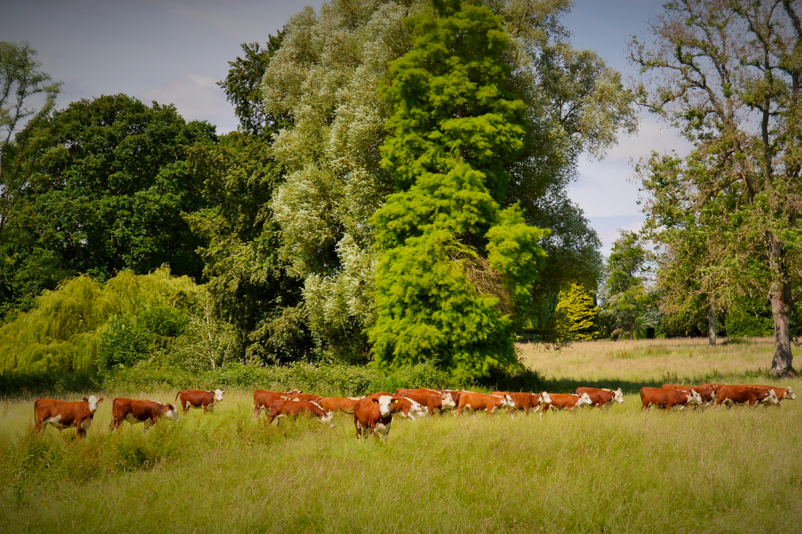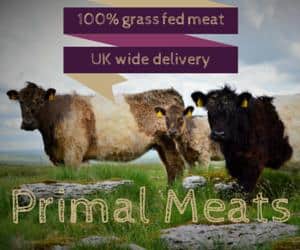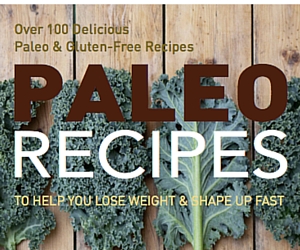This guest post is written by Caroline Watson from Primal Meats https://www.primalmeats.co.uk/ who specialise in 100% grass fed meat, organic chicken, pastured pork and wild game.
Like me, you may consider yourself a health conscious carnivore and seek out meat that has been ‘grass fed’ because you believe it has superior nutritional benefits. But what does ‘grass fed’ actually mean, and are you getting what you think you are?
In the USA there are CAFO’s (concentrated animal feeding operations), you know, the massive feedlots full of thousands of beef animals who intensively feed on grains and anti-biotics. In the UK we don’t see these sorts of large scale monstrosities but are all the UK’s beef cattle all wondering around in fields eating grass?
The answer is not straightforward – sorry!
The fact that someone has gone out of their way for look for ‘grass fed’ beef, usually means they have a good reason to do so. Some people – including myself – would argue that it tastes better and is far better for the environment, but the real driver is because of the positive health claims.
It is reported throughout the paleo and primal world that grass fed meat has:
1) Higher Nutrient quality
2) Higher Omega-3 content
3) Healthier omega-3 to omega-6 ratio
All meat is incredibly nutritious, and as humans we are well designed to digest effectively and assimilate the nutrients in meat.
Red meat is rich in the vitamins B12, B3, B6 and is rich in highly bioavailable forms of Iron, Zinc, selenium, sodium, phosphorus and potassium. (1)
The really big nutrient differences appear when you compare grain fed meats to those meats from animals who have eaten an entirely pasture-based diet, these animals get no grains.
100% grass finished meats contain high levels of beta-carotene and the anti-oxidants vitamin E, glutathione (the master anti-oxidant), superoxide dismutase and catalse. All of these hugely healthy antioxidants help protect our cells from oxidation. (2)
The overall ratio of saturated, polyunsaturated and monounsaturated fats are fairly comparable between grain fed and grass fed meats, but 100% grass fed meat wins hands down on the health promoting fatty acid profile.
By now most of us are aware that we probably shouldn’t be scared of saturated fat, (3) but not all saturated fats are made equal. Pasture finished meats contain higher levels of stearic acid which does not elevate blood cholesterol levels and less palmitic and myristic acid that seem to have a negative influence.
A particularly desirable fatty acids is conjugated Linoleic Acid (CLA) which is a type of Polyunsaturated fat and is 2-3 times higher in 100% grass fed meat than in grain fed meat. CLA is claimed to have a protective effect from heart disease, diabetes and even cancer.
The fatty acid we have all heard of is the polyunsaturated fat Omega 3 which has impressive anti-inflammatory properties (4). There could be as many as 3-5 times omega 3 fatty acids in 100% grass fed meats depending on the quality of the grazing pasture and the time of year the animals are slaughtered.
In healthy traditional cultures our balance of -3 and omega-6 would be 1:1 or 1:2, this fairly equal ratio has proven to promote health in humans.
Our modern westernised diets are high in vegetable oils, grains and processed foods which creates a pro-inflammatory omega-3 to omega-6 fatty acid ratio of up to 1:20. The problem with eating too many omega-6 fatty acids is that they compete for the same biochemical processes as omega-3 – the more dominant will grab all the resources (enzymes and micronutrients). So even though you may be eating plenty of omega-3 rich foods, you may not be benefiting from it. Meat that is grain fed will contain similar quantities of omega-6 as 100% grass fed meats, but due to the high omega-3 content it will do you far more good.
So has your ‘grass fed meat’ been 100% grass fed?
In the UK, we have a wide variety of farming practices – there is no ‘standard’ way to rear beef.
There are no specific labelling laws governing grass fed meat, the term is thrown onto nearly every packet of meat these days and can be considered fairly meaningless.
‘Grass Fed’ can cover animals who have spent a minimal period of their life grazing and are grain fed until slaughter, right through to those who have grazed on herb-rich pastures their entire lives.
Please remember that this whole ‘grass fed’ thing is only applicable to ruminant animals that would be grazers by nature. Omnivores like hens and pigs like a bit of grass, and eat the invertebrates found in the pasture, but it is very unlikely to be able to finish these animals commercially on just grassland.
Most UK farms now use grains and other feeds to ‘finish’ their cattle and sheep. Some beef and sheep finishing farms will rear animals indoors entirely on grains right through to slaughter. Of course you don’t notice these farms, their animals are hidden out of sight, and you only tend to notice the cows in fields.
Organic beef does not guarantee the nutrient quality of meat either, although their principles of high welfare, low input production are better than many ‘conventional’ farms. Many ‘organic’ farmers will finish their animals on organic grains, and this could be shipped long distances. Some people would argue that using grain fit for human consumption and feeding it to animals – organic or not – is not a efficient or sustainable use of food.
There are a small number of passionate farmers in the UK finishing their animals exclusively on grass and nutrient dense pasture crops like red clover and Lucerne. The only recognised certification program for ‘grass fed’ or ‘pasture-fed’ meat is run by the Pasture Fed Livestock Association. The PFLA are working hard to get more farmers on board to sell under their label ‘pasture for life’.
So the chances are if it does not say 100% grass fed or ‘pasture for life’ it will be grain fed – but does it matter to your health?
The critical period for the animals to be grass fed is in the 80-90 days prior to slaughter. Most UK farms will feed grains for at least this long to fatten or ‘finish’ the animals prior to slaughter, often this process is done indoors to make it less wasteful.
An Australian study into the ‘effects of feeding systems on Omega-3 fatty acids, conjugated linoleic and trans fatty acids in Australian Beef cuts: potential impact on human health’, showed that all the previously gained omega-3 and CLA of grass fed beef was destroyed in just 80 days of grain feeding. The beneficial nutrients were destroyed so badly that they no longer qualified as being a meaningful dietary source by the New Zealand and Australian Food Standards Agency. (5)
So ‘grass fed’ is a pretty misleading term and undermines the efforts of those farmers who really do have a deep understanding of ‘holistic’ farming practices.
The advocates of pasture-based farming put up a pretty convincing case for both sustainability and global food security too. Traditional hardy native breeds of animals are often used in pasture-based farming. These animals utilise – and help manage – the thousands of acres of rough pastures, woodlands and moorlands that are not normally cultivated or managed by hand. These meat animals convert grass into nutrient dense, delicious food for humans with virtually no carbon footprint! This is in stark contrast to the monster carbon and water hoof print created by a grain fed beef animal.
So if you want to guarantee you’re getting the nutrient punch you expect from your next grass fed steak, please ask the following questions of your supplier.
*Have these animals been grazed on pasture?
*Are they fed ANY grains?
*What feeds are used to ‘finish’ the livestock?
It is now down to you to become a ‘food detective’ and judge the credibility of your answer.
Good luck.
Caroline Watson
Primal Meats
https://www.primalmeats.co.uk/
(1) Kris Gunnars Is red meat bad for you or good? An objective look. www.authority nutrition.com
(2) Nutrition Journal 10/3/2010 A review of fatty acid profiles and antioxidant content in grass fed and grain fed beef. www.ncbi.nlm.nih.gov/pmc/articles/PMC2846864/
(3) Kris Gunnars – The top 8 reasons not to fear saturated fat – www.authoritynutrition.com
Chriss Kresser 19/4/2013 The diet Heart Myth; Cholesterol and saturated fat are not the enemy – www.chriskresser.com
(4) Mark Sisson – 7/4/2011 – The differences between grass-fed and grain fed beef. www.marksdaily apple.com
British Journal of Nutrition 2011 105, 80-89 Red meat from animals offered a grass fed diet increases plasma and platelet n-3 in healthy consumers.
(5) Asia Pac J Clinic of Nutrition. 2006; 15(1);21-9. Effect of feeding systems on omega-3 fatty acids, conjugated linoleic acid and trans fats in Australian beef cuts: Potential impact on human health.
Sign up to our 30 Day Paleo Weight Loss Plan for 30 days of paleo meal plans, shopping lists and recipes plus lots more. Lose weight, increase your energy levels, tone up and sleep better!








You must be logged in to post a comment.